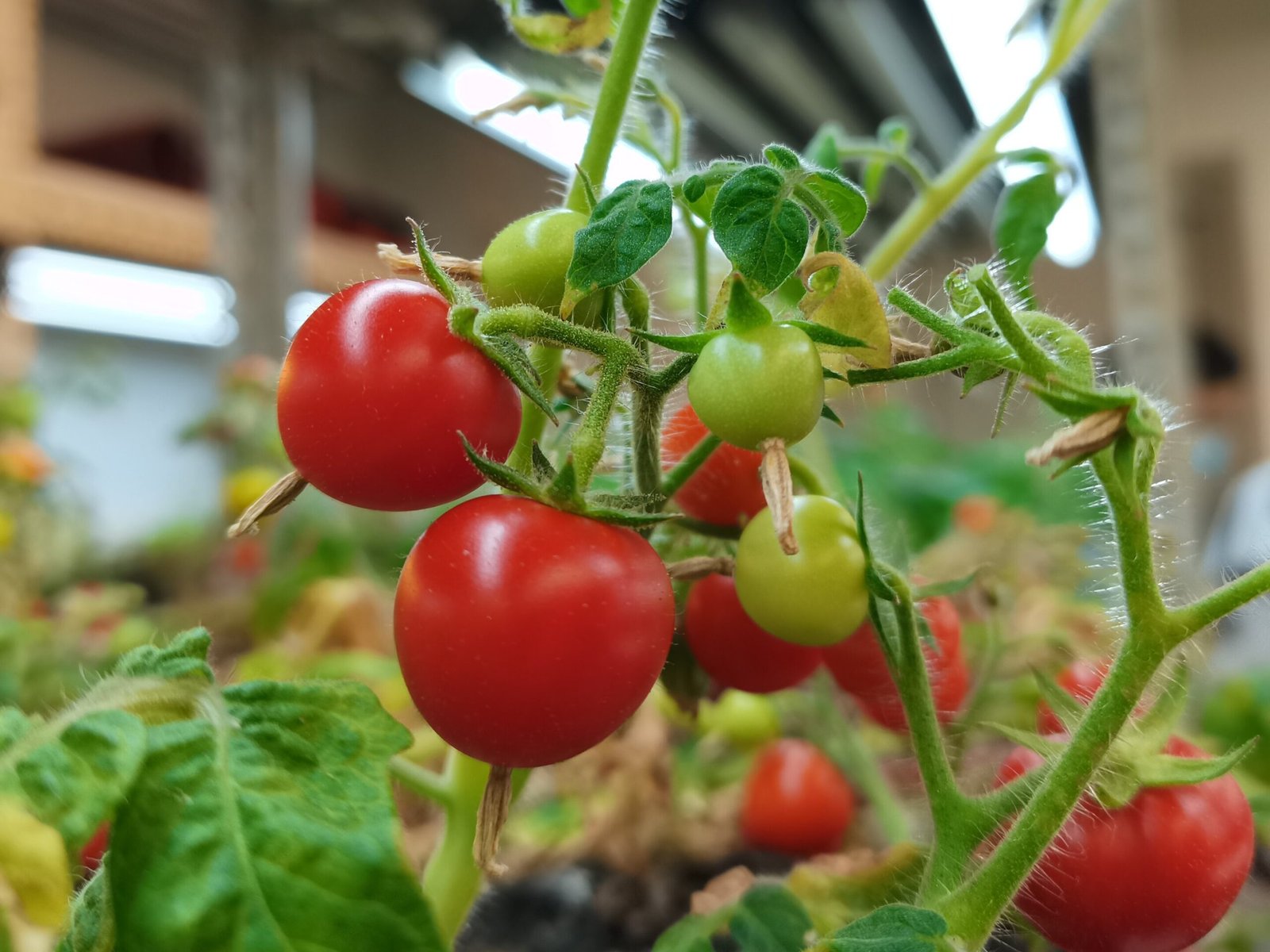A team of researchers led by Professor Qin Guozheng from the Institute of Botany of the Chinese Academy of Sciences has uncovered a novel mechanism that regulates tomato fruit ripening. The study, published in Nature Plants, focuses on how the RNA N6–methyladenosine (m6A) demethylase enzyme SlALKBH2 is modified through a redox (reduction-oxidation) process, which affects its stability and role in controlling fruit ripening. The findings deepen our understanding of the complex molecular pathways involved in fruit development, particularly focusing on the signaling molecule hydrogen peroxide (H2O2) and its influence on m6A modification.
In plants, the ripening of fleshy fruits, like tomatoes, is the final stage of development and has profound implications for fruit quality and shelf life. The study reveals how H2O2-mediated oxidative modification plays a critical role in regulating the function of SlALKBH2, an enzyme that is essential for proper fruit ripening. The interaction between oxidative signals and RNA methylation processes is shown to be an integral aspect of the coordinated regulation of plant development.
One of the major discoveries of the study revolves around the role of m6A methylation in plant biology. m6A is the most common chemical modification found in eukaryotic messenger RNAs (mRNAs), influencing their stability, translation efficiency, and overall metabolic processing. The dynamic nature of m6A modifications in response to various signals helps regulate critical biological processes. However, the role of m6A demethylases, such as SlALKBH2, in this context was previously not well understood.
SlALKBH2 belongs to the dioxygenase family of enzymes, which are capable of reversing m6A methylation through an oxidative process. This raises the intriguing question of whether SlALKBH2 itself could be subject to oxidative modification, much like other proteins sensitive to redox changes. To investigate this, the researchers conducted a series of experiments in which they expressed the SlALKBH2 gene in Nicotiana benthamiana (a model plant) leaves treated with H2O2, to assess the enzyme’s redox sensitivity.
The results were striking: SlALKBH2 was highly sensitive to H2O2-induced oxidation. This oxidation led to the formation of homodimers of SlALKBH2, both in the N. benthamiana leaves and in tomato fruits. The presence of H2O2 significantly accelerated tomato fruit ripening, suggesting that the oxidative modification of SlALKBH2 plays a crucial role in this process. This insight points to a potential connection between H2O2 signaling and the regulation of RNA methylation modifications, with implications for plant developmental processes such as fruit ripening.
In examining the molecular details, the researchers identified several cysteine (Cys) residues within the SlALKBH2 protein that contributed to homodimer formation upon oxidative modification. Specifically, Cys39 was pinpointed as a key site for this redox-sensitive interaction, as mutations at this location drastically reduced homodimer formation. While oxidative modification enhanced the stability of the SlALKBH2 protein, it did not alter its ability to carry out its function as an m6A demethylase. This suggests that the redox modification of SlALKBH2 stabilizes the protein, allowing it to perform its role more effectively during fruit ripening.
Further exploration led to the identification of an important interacting protein, NADPH-thioredoxin reductase C (SlNTRC). This protein was found to regulate the redox state of SlALKBH2, thereby modulating its m6A demethylation activity in tomatoes. This interaction highlights the complex network of proteins involved in regulating SlALKBH2’s function and offers a new layer of understanding about how redox mechanisms can influence RNA modification in plant development.
To further validate these findings, the research team employed CRISPR-Cas9 gene editing to create stable knockout mutants of SlNTRC in tomatoes. These mutants showed significant delays in vegetative growth and were unable to produce fruit. The results underscore the importance of SlNTRC and its role in regulating the redox status of SlALKBH2, reinforcing the connection between redox signaling and m6A modification in fruit ripening.
This study provides valuable insights into the intricate regulatory mechanisms behind fruit ripening and introduces the idea that redox regulation of m6A demethylases may be a key factor in coordinating plant development. The connection between hydrogen peroxide signaling and RNA methylation opens up exciting new avenues for future research, particularly in the context of crop improvement. Since RNA m6A modification influences a wide range of biological processes, this regulatory mechanism may also extend to other developmental stages and processes, such as seed germination, flowering, and response to environmental stress.
By highlighting the role of redox regulation in plant biology, this research adds an important layer of complexity to our understanding of how plants regulate their growth and development. The findings have broad implications for improving crop varieties and could potentially lead to the development of tomatoes and other fruits with enhanced ripening characteristics, better quality, and extended shelf life. Moreover, understanding the redox-sensitive pathways controlling m6A demethylases may lead to new strategies for enhancing plant resilience and productivity in the face of climate change and other environmental challenges.
Reference: Redox modification of m6A demethylase SlALKBH2 in tomato regulates fruit ripening, Nature Plants (2025). DOI: 10.1038/s41477-024-01893-8
Think this is important? Spread the knowledge! Share now.
